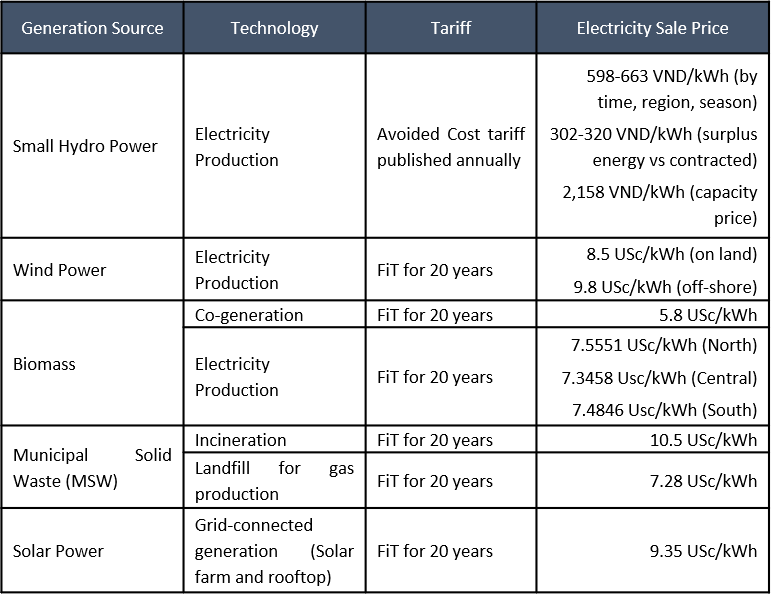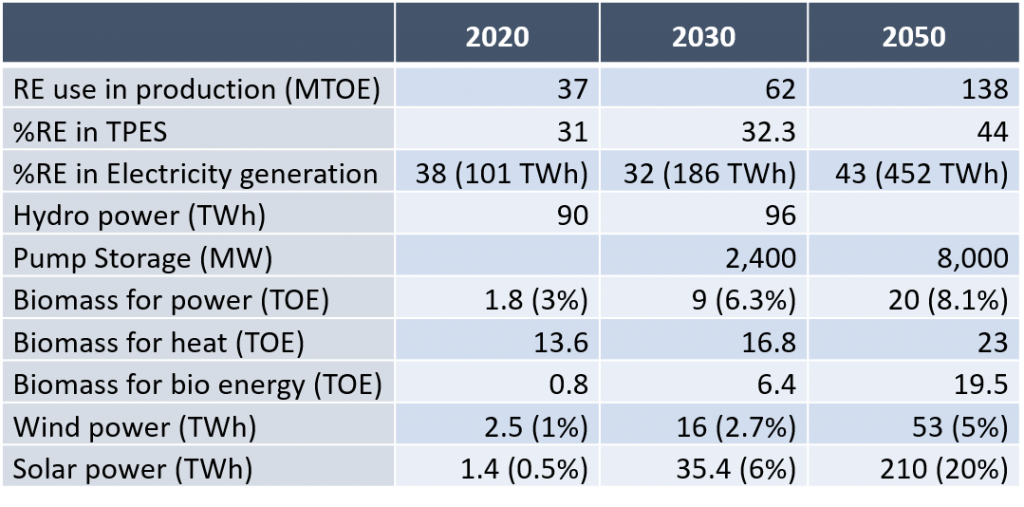According to the Vietnam energy outlook 2017 published by Ministry of Industry and Trade, the summary of existing supporting mechanisms for renewable energies or renewable energy feed in tariff is shown as in Table 2 below:
Vietnam RE Feed in Tariff in 2017

Source: Vietnam Energy Outlook 2017
The wind energy sector is expected to develop progressively in the coming years. There is an on-going 6 MW wind farm project on Phu Quy Island in Binh Thuan province. In 2012, the installation of 10 wind turbines with a total capacity of 16 MW was completed in Bac Lieu province. The process of grid connection is under way. In total, 62 wind turbines are going to be installed in the first phase of this project with total installed capacity of 99.2 MW. Another 52 turbines are planned for the second phase.
The government has launched a roadmap for electricity market liberalization. This will offer opportunities for individuals or businesses to establish energy retailing enterprises. However, this roadmap is a long-term process and a fully competitive retail market cannot be expected in the near future.
The subsidy for renewable energy development is necessary to attract investments. However, since the subsidy price for electricity (excluding small hydro) is higher than the average price offered by the EVN on the electricity market, it is necessary to consider the option for setting up a fund to support renewable energy development.
The National Energy Development Strategies for Vietnam up to 2020 with an outlook until 2050 states that the Government of Vietnam considers to establish an Energy Development Fund to support the development of renewable energy project. Under this fund, the developers of renewable energy-based power project have access to investment credits from the state which provides loans at favourable interest rate.
The Vietnam Renewable Energy Development Strategy up to 2030 with an outlook to 2050 states that the Sustainable Energy Promotion Fund shall be established to support renewable energy development. The fund will be provided by the state budget, revenue from the environmental fees levied on fossil fuels, various source of funds, and contributions from domestic and foreign organisations. This fund will provide the financial support to compensate the costs incurred by the power utilities on the investment and construction cost for power system using renewable energy power sources. This fund also supports the studies as well as the R&D of renewable energy project and construction of renewable energy projects in rural areas.

 Source: National Master Plan for Power Development for 2011 – 2020 with the vision to 2050
Source: National Master Plan for Power Development for 2011 – 2020 with the vision to 2050